Australia was seen as the land of opportunity by tens of thousands of Greeks who, after World War II, began to emigrate in masses to the other side of the world, in search of a better future.
They were difficult years, with adverse conditions, not only in Greece, but also in their new homeland, where adjusting on a personal and professional level was not without obstacles.
In order to realise their dreams, the newly arrived Greek migrants had to work hard, make sacrifices, show perseverance and patience, find the right partner in life, hope for a bit of luck, and often, even advertising in Neos Kosmos.
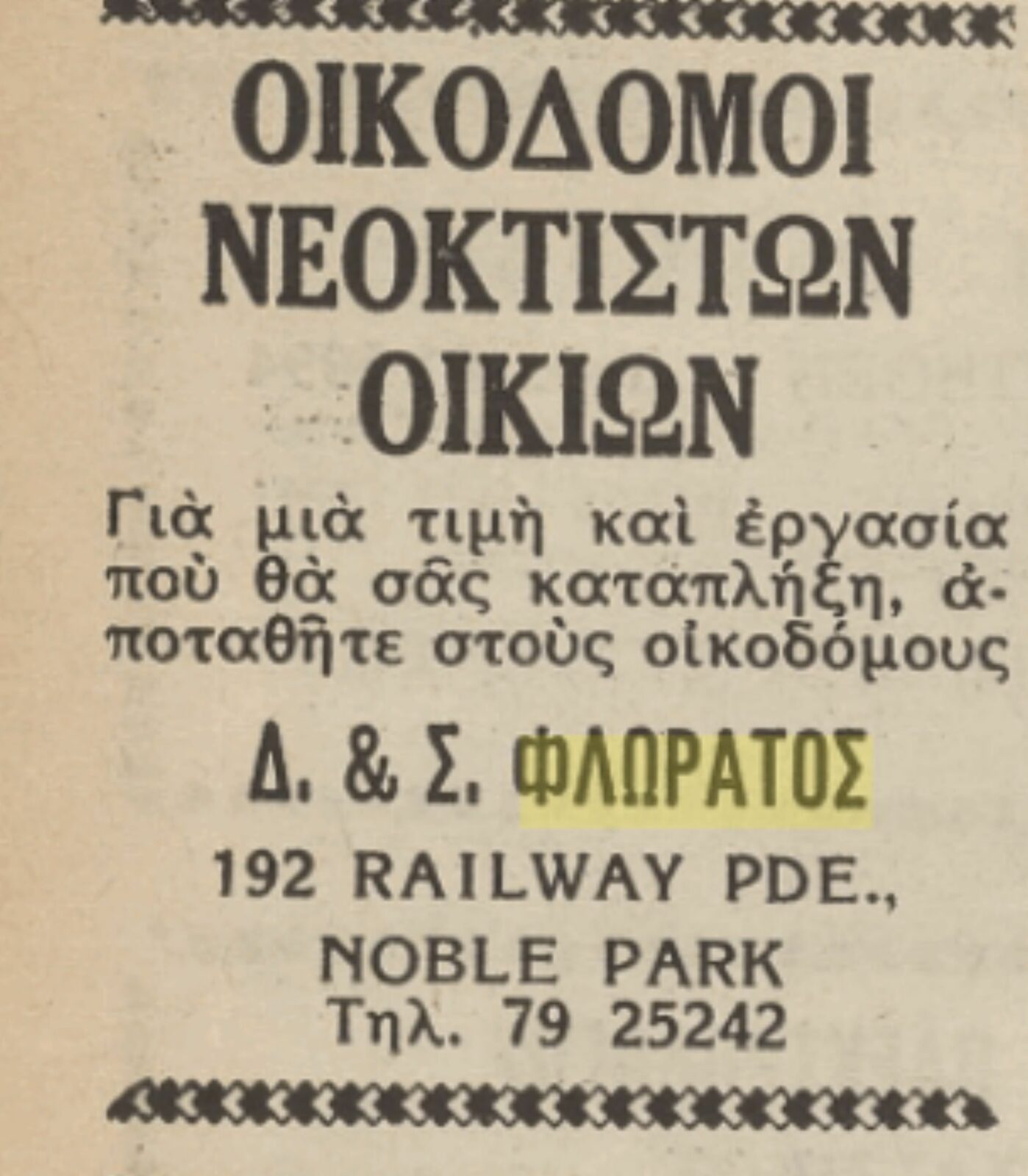
Advertisement in Neos Kosmos.
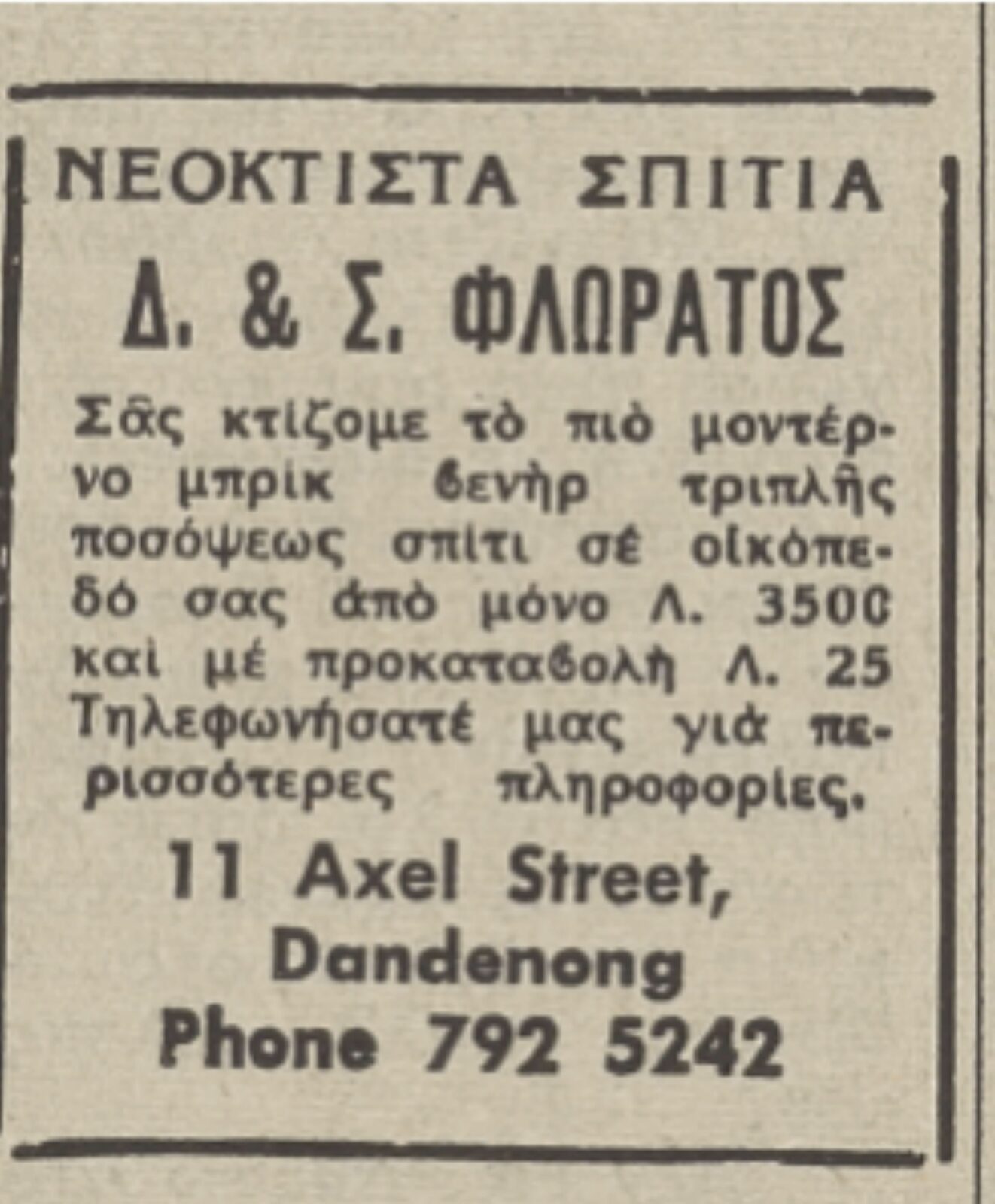
Advertisement in Neos Kosmos.
“In 1964, I placed an ad in the Greek newspaper, Neos Kosmos, and as a result of it, I had so many phone calls from Greeks, who wanted to build a house, with someone they could communicate with in their mother tongue. The Greek community was booming and so were our businesses. This advertisement changed my life professionally,” Dimitris (Jim) Floratos, told Neos Kosmos. The Greek Australian is known in the community for his successful career in the construction industry, but also for his charity work, which he did together with his wife, Spiridoula Floratos (née Georgatou).
“My dream was to come to Australia and use my knowledge to build houses. I was a bricklayer, a carpenter, a painter… I did everything. But after my ad in Neos Kosmos, I found myself employing 10-20 people. I also received a lot of support from the services when I applied for permits. Even though I didn’t know the language very well, I didn’t have any obstacles, ever. On the contrary. This was not always the case for many immigrants at that time,” Mr Floratos said.
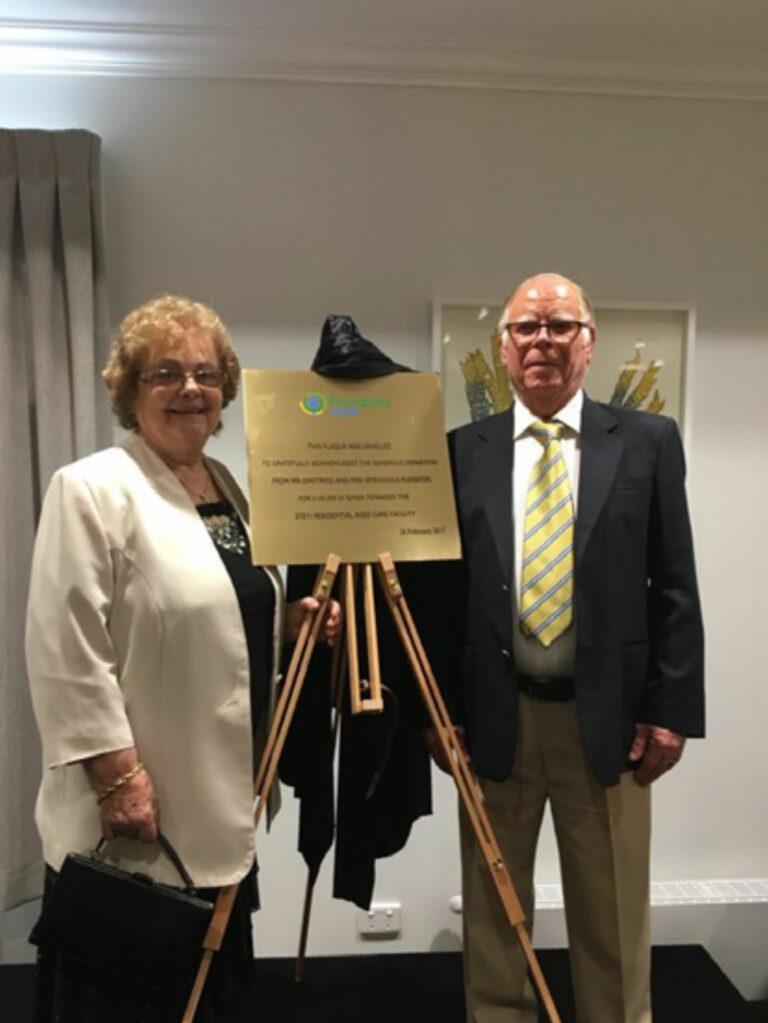
He stressed that over the years, he is grateful for two fortunate events in his life:”Firstly, my decision to choose Spiridoula to be part of my life; a very good looking girl with an excellent character. She was a tremendous help when making important decisions throughout our life together…” Dimitris and Spiridoula were married in Melbourne, on Saturday 24 June 1961, and this year they will be celebrating their 61st wedding anniversary.
“The second thing I am grateful for, is my decision to migrate to Australia. It turned out to be the best country for me, offering me plenty of opportunities to succeed in my life. It was also an excellent country to raise my family.”
Scouring the Neos Kosmos archives it was Mr Floratos’ early advertisements which prompted us to interview him about his life, which he had decided to start recording in an autobiography during the pandemic.
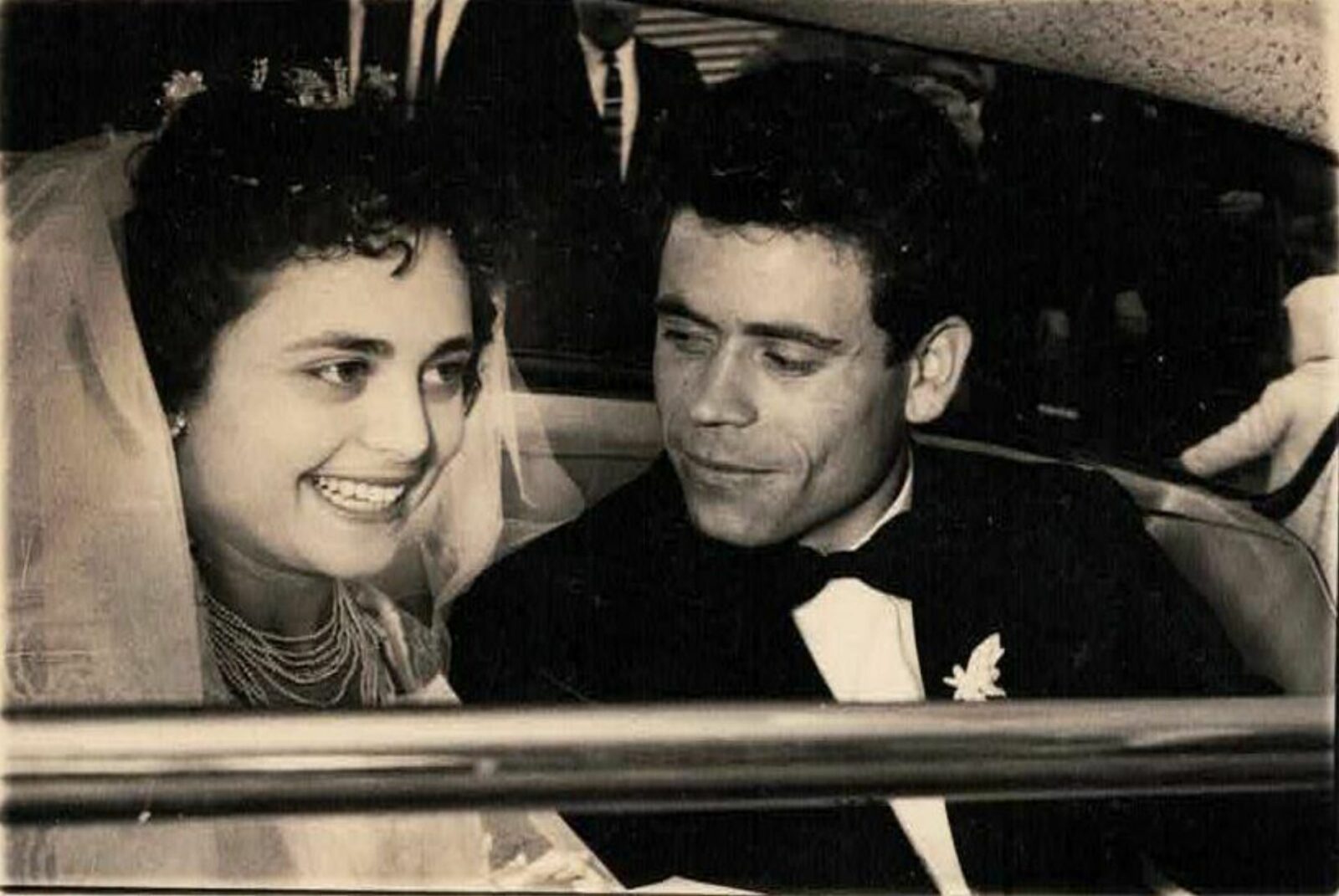
During their wedding on 24th June 1961, in St Kilda. Photo: Supplied
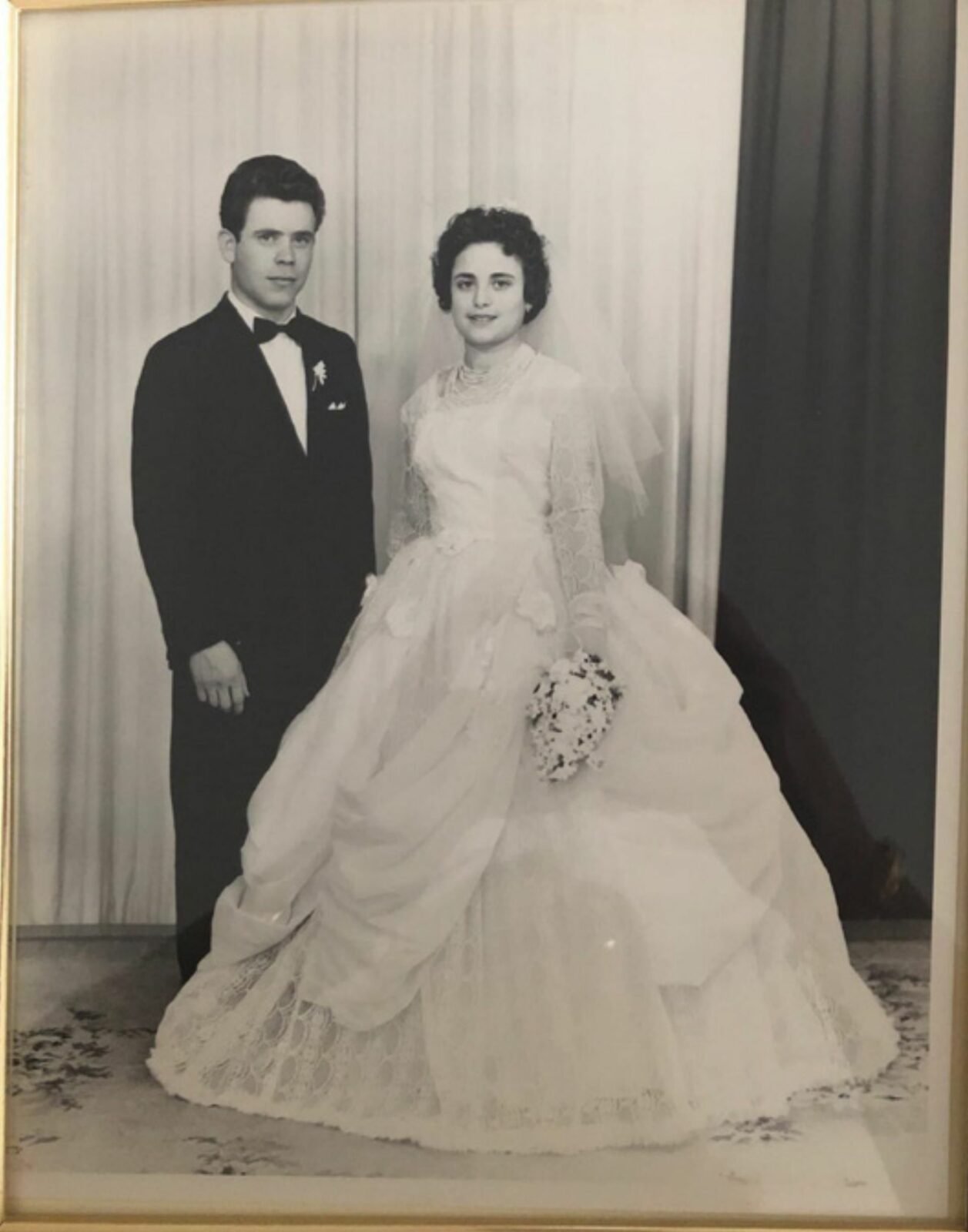
During their wedding on 24th June 1961, in St Kilda. Photo: Supplied
His memories took us on a journey back in time, to the Greeks arriving in Australia more than 60 years ago, the conditions they faced, circumstances in Greece, and how some tragic circumstances can change our lives forever.
Kefalonia
Dimitrios Floratos was born in Pyrgi, Kefalonia, on 6 November 1935, to Vrasidas and Anastasia. Here Mr Floratos reflects on his early memories:
My grandfather, Gerasimos, had a herd of approximately 750 sheep and goats, and employed 2 men on a permanent basis, to work for 24 hours, 7 days a week, to look after the livestock, which produced cheese, milk, meat and wool.
He was known as the son of “Fookena”, who, in addition to Gerasimos had two more children, Dionysis and Nicholas.
In the early 1900’s all three of them left the island for a new life in New York.
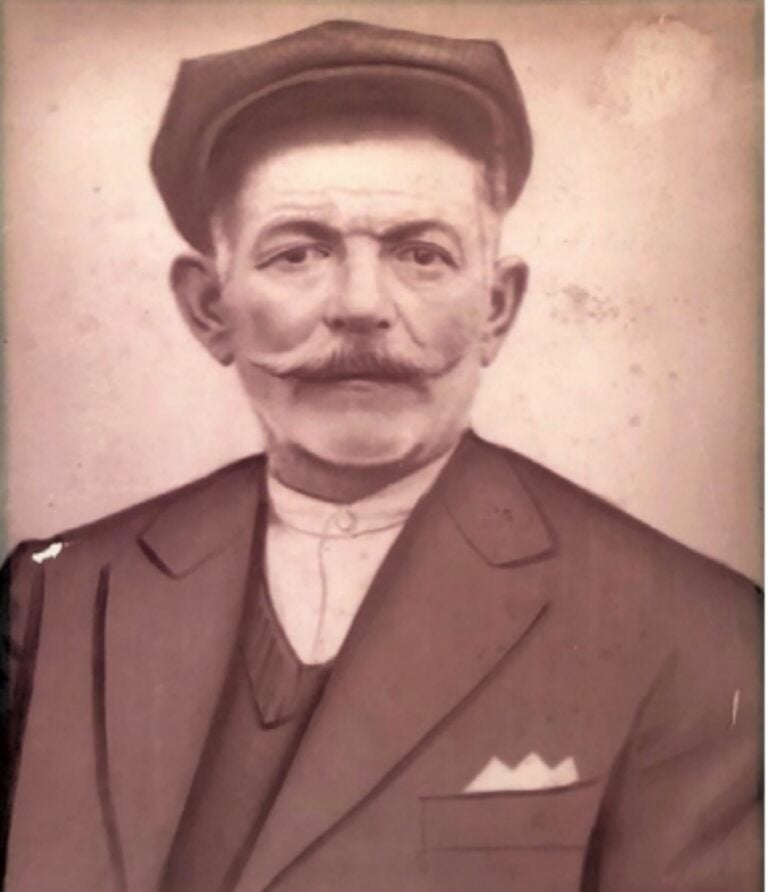
But during the Balkan wars, my grandfather, Gerasimos, felt the need to return to Greece to enlist in the army. A few years later, his brother Dionysis, who was still in New York, got sick and passed away. After his death, his family in New York and his mother who was living in Kefalonia, became recipients of a “US pension” since he worked for the military department in New York.
My great grandmother would hand the money over to her only son in Kefalonia, Gerasimos. The amount is unknown, but villagers would gossip that it was ‘big money’ in Greek currency.
His son, my father, was called Vrasidas, and he was a barber by trade. He had a Kafeneio, a barber store and a deli, all in one shop, at the centre of the village.
To increase profits, every Saturday, the store would also sell meat to the villagers. As they did not have a fridge in those days, the meat that wasn’t sold, was taken home and all the family enjoyed a Sunday roast lunch.
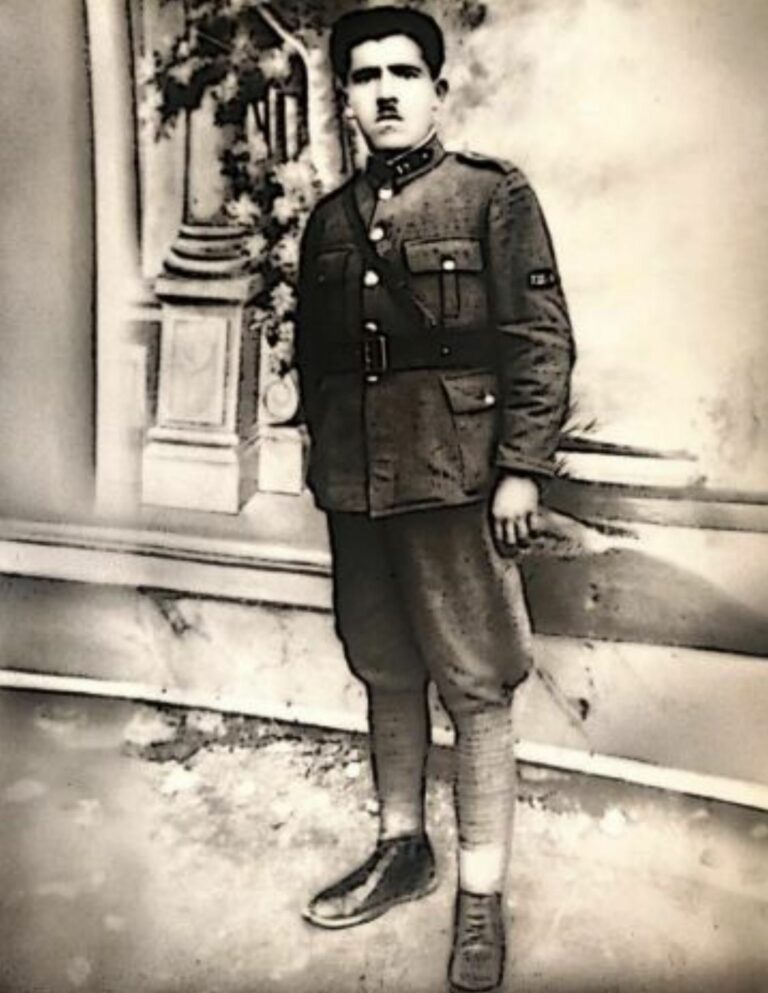
Childhood years
In June 1947 I had just finished Primary School. Since I had graduated with an average of 9.5 out of 10, and I was the first boy in the family, my father promised me that in September I would start High School in Argostoli, 35 kilometres away.
But the Civil War would change everything.
Opposite my father’s Kafeneio, there was a two-storey building where a group of police and army officers were staying. The group was named the ‘Apospasma’ and their role was to capture the guerrillas. These men, would often visit my father’s Kafeneio which was directly across the road, and they became friends over time.
One night the guerrillas came into the kafeneio and took all 15 people gathered there, to a place one kilometre outside the village.
They asked each person their name and let everyone go, except for my father, Vrasidas, who was 37 years old at the time -with a very young family of three boys and two girls- along with my grandfather, Gerasimos, who was 62, and killed them both.
I will never forget waking up to my mother screaming and crying early the next day. I sat up in bed, trembling. My dreams and my whole life were turned upside down. I was crying every day.
I had no other choice but to stay home and try to help my mother raise the young family of five; I was the eldest son. The youngest was Maki who was only 10 months old.
Those were the worst years of my life. I had to work very hard for very little. By this time all my grandfathers’ stock and my father’s Kafeneio had miraculously disappeared, and I never found out how.
When the civil war ended, we agreed with my mother that I couldn’t continue my education. We both had to work as hard as we could, so that the two younger boys could get an education.”
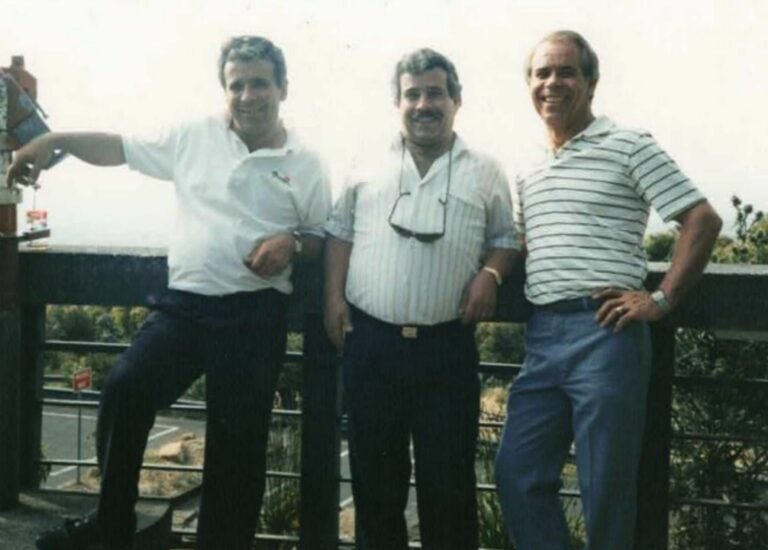
The disastrous earthquake
On August 12, 1953, a major earthquake, with a magnitude of 7.2 Richter, hit the island of Kefalonia.
“I went outside but could not see a thing, as there was a blanket of thick dust that took a few hours to clear. At the time of the earthquake, I was seventeen years old.” Mr Floratos recalls.
Life on the Ionian islands would never be the same. Many islanders left their homeland during this time, migrating as far as Australia.
The disaster Dimitris Floratos witnessed in his village was forever etched in his mind. The destruction, the pain and anguish he saw in the eyes of relatives and friends who lost members of their families, their livelihood, probably subconsciously influenced him, driving him to build.
After the earthquake
A few months after the earthquake, the government set up a technical school in Pyrgi, to teach the locals how to rebuild the houses on the island.
“I successfully completed the course. The government was providing grants to help all the families rebuild their homes, and over a three-year period, three of us, with the help of hired labour built approximately 70 of these homes.
When the houses were completed there was not much work left to do. I was 22 years old by now, and thought… what do I do now? I went to Patra but within only a few months most of my savings were gone.
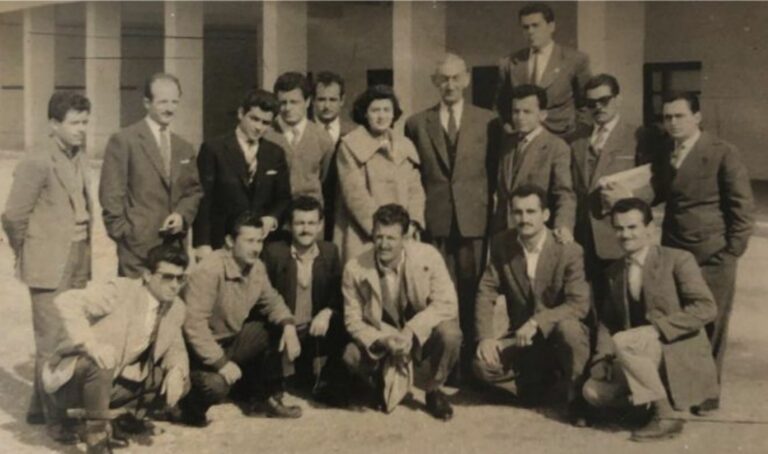
I considered my options. I would either have to leave, to work on a ship -although I hated the sea- or, I would have to go to another country and start a new life.
At the time, Australia was setting up temporary schools in different parts of Greece to teach groups of young people basic English. I successfully passed the course and I was ready for Australia.
In my mind, I was hopeful, that having acquired the skills in construction, I would have the opportunity to build homes and sell them when I settled in the new country.
The journey to Australia
In March 1959, I departed for Australia. The journey took 35 days in total to reach Freemantle, instead of the usual 21- 22 days for Melbourne. We boarded a very old Spanish ship in Piraeus called Monserrat. A few days after passing the Suez Canal the ship broke down and we had to dock in Colombo Ceylon (Sri Lanka), where they tried to fix it.
When we finally arrived in Fremantle, the Australian authorities declared that the ship should not travel again and be scrapped. We were very lucky to have made it to Fremantle!
On our arrival in Melbourne, we were sent by train to Bonegilla. I stayed there for 10 days. I had the address of another man from my village who came to Australia a few years earlier. I contacted him and moved to Bay Street, Port Melbourne with 10 pounds in my pocket.
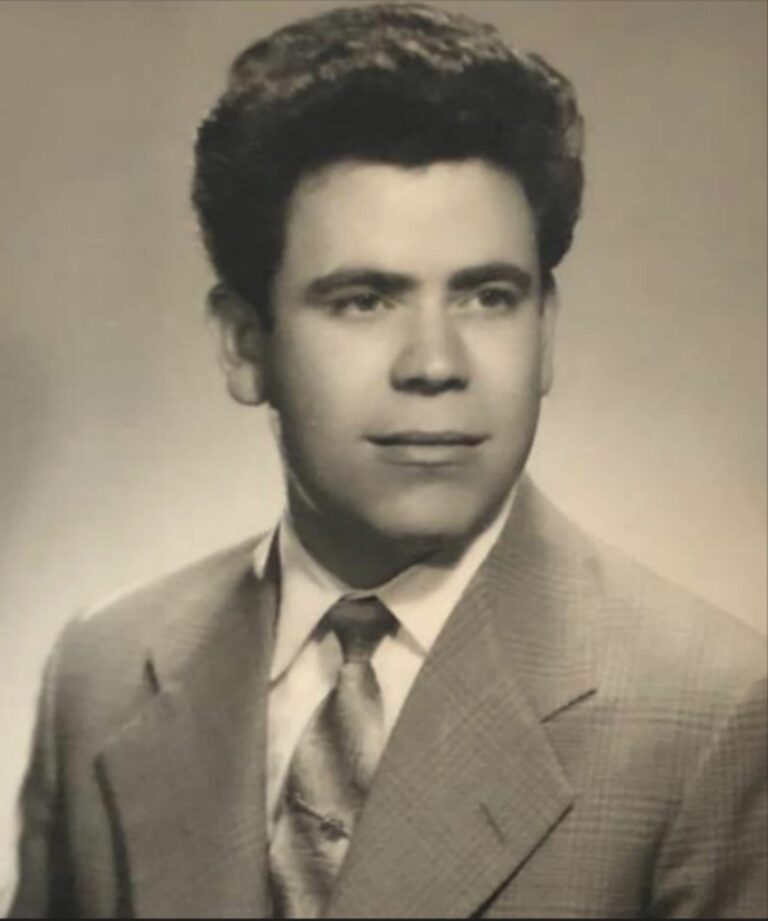
The first years in Australia
I landed my first job at the Exhibition building, to assist in putting together stands for an exhibition. My second job was in St Kilda where I worked for an old Englishman, who had two big, old double storey buildings which he wanted to renovate and transform into 60-70 apartments for rent. Once it was completed, I was the only one he kept on to be his maintenance man. I stayed with him until the end of 1963.
Meanwhile in 1960, I bought an old double fronted weatherboard house opposite South Melbourne Park in Howe Crescent, with another man from Kefalonia. We renovated it and sold it a year later, to a couple from Mytilene. With the money I made, I had enough deposit to buy my first block of land in Dandenong. It was the first step in realising my dream.”
From dancing with Spiridoula to marrying her
“In those days, if you were not prepared to get married, it was nearly impossible to have a ‘girlfriend’ as you needed to have the intent to marry in order to go out with a girl. We danced only with the girls we wanted to impress.
I was dancing a lot with a girl from the next village, called Spiridoula. The day before I left Kefalonia for the long journey to Australia, we met at my cousin Olga Foka’s house, as they were friends, and we exchanged a few words.
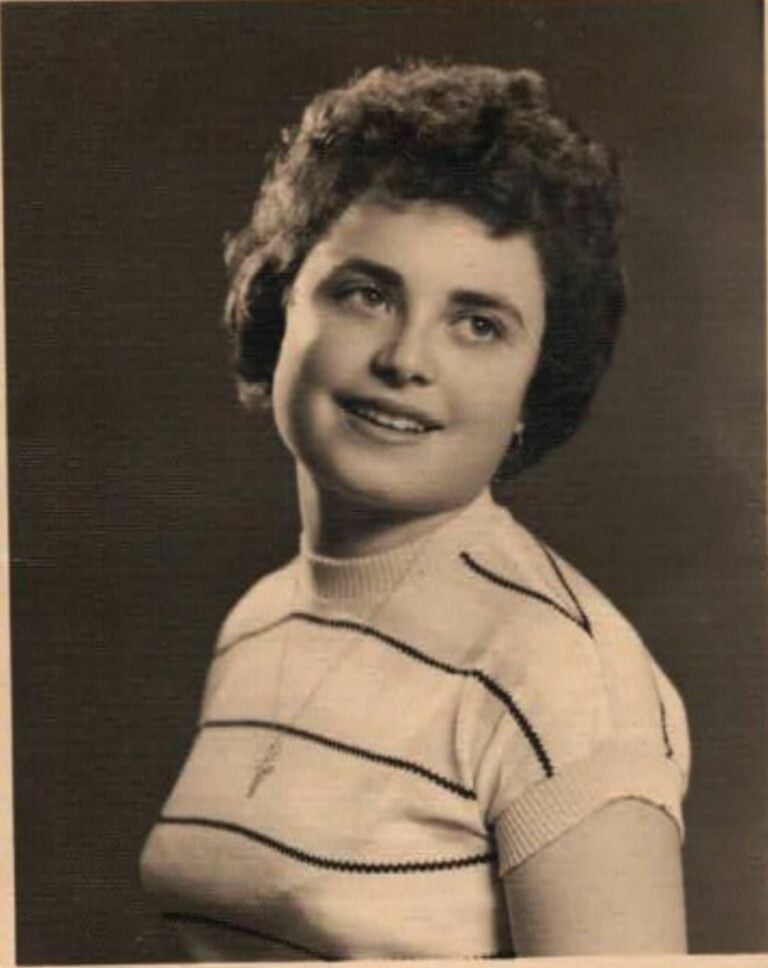
After a few months in Australia, when I was certain that I was going to settle in Melbourne, I sent a letter to my cousin, asking her to find out if Spiridoula wanted to join me.
I was thrilled when she wrote back that Spiridoula was delighted to come, even though her parents, the Georgatos family, were against the idea as they were planning to move to New York.
A month after Spiridoula turned 21, in April 1961, she boarded the Patris.
I picked her up from Port Melbourne and as you can imagine, those were the happiest days of my life.
I never thought she could be so nice, in so many ways, as a person, in looks, humour and character… and always laughing. She liked to help everybody and she never said a bad word about anyone, even if they upset her.
We married on Saturday 24 June 1961 and held our reception on the waterfront, at a venue on St Kilda Beach.
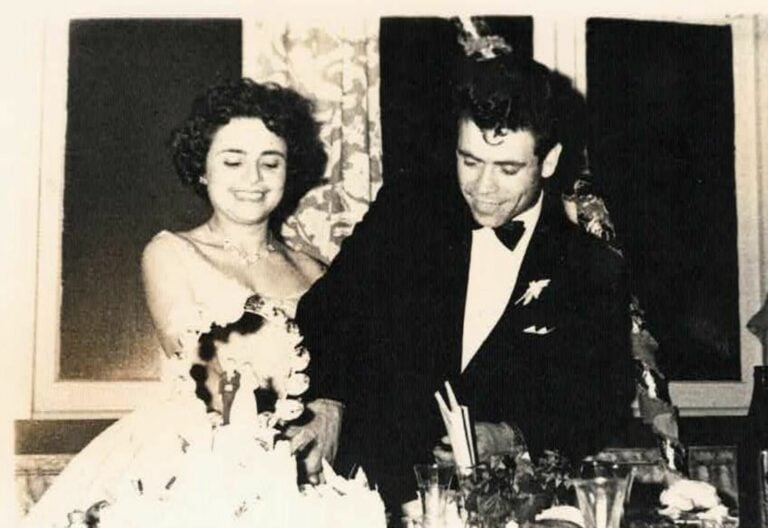
“Building” the dream
In order to start building and selling houses we had to move to Dandenong.
We found a one-bedroom unit in South Dandenong, and were very happy there.
I started preparing plans and permits for my first project. During the construction of my first house, I did nearly all of the work myself. It took 12 months to complete and throughout that time I still continued to work in St Kilda, which was 30 kilometres away. I was getting up at dawn to work on the house until the time I would have to leave for St Kilda, and then, after work, I would travel straight to my building where I worked until dark.
For this project, I had used up all my earnings. Spiridoula was working at the time in a Fitzroy sewing factory. She worked there for around 12 months, until a few weeks before our daughter Anastasia (Sia) was born, who we named after my mother.
Once the house was completed and sold to a young Greek couple from the region of Korinthe, we moved in with them for a few months. It wasn’t for long though, as they welcomed a baby, and Spiridoula also fell pregnant again with George. George was named after my late brother, who had passed away at the age of fifteen.
We were forced to rent a weatherboard house next to railway lines in South Dandenong (which had the toilet outside), and we stayed there for around 3 years, until I saved up enough to start building our first family home in Dandenong North.
It was then, in 1964, that I placed an advertisement in the Greek newspaper, Neos Kosmos. In those days, immigrants living in Australia for less than one year, had typically saved up enough money for a deposit to buy or build a new house, and many chose to do so, as the government made it very easy for you to get a loan for a new house.
As a result of my advertisement in the paper, I had so many phone calls from Greeks who wanted to build a house, especially with someone that they could communicate with in their mother tongue. The manual work was no longer done by me. I had approximately 10 houses on the go at any one time, so my time was spent managing and organising the workers. Each house took around 3-4 months to be completed. It seemed odd to me that I came to Australia to work for Australians, and in only five years, with very little English, I had 10 to 20 Australians working for me.
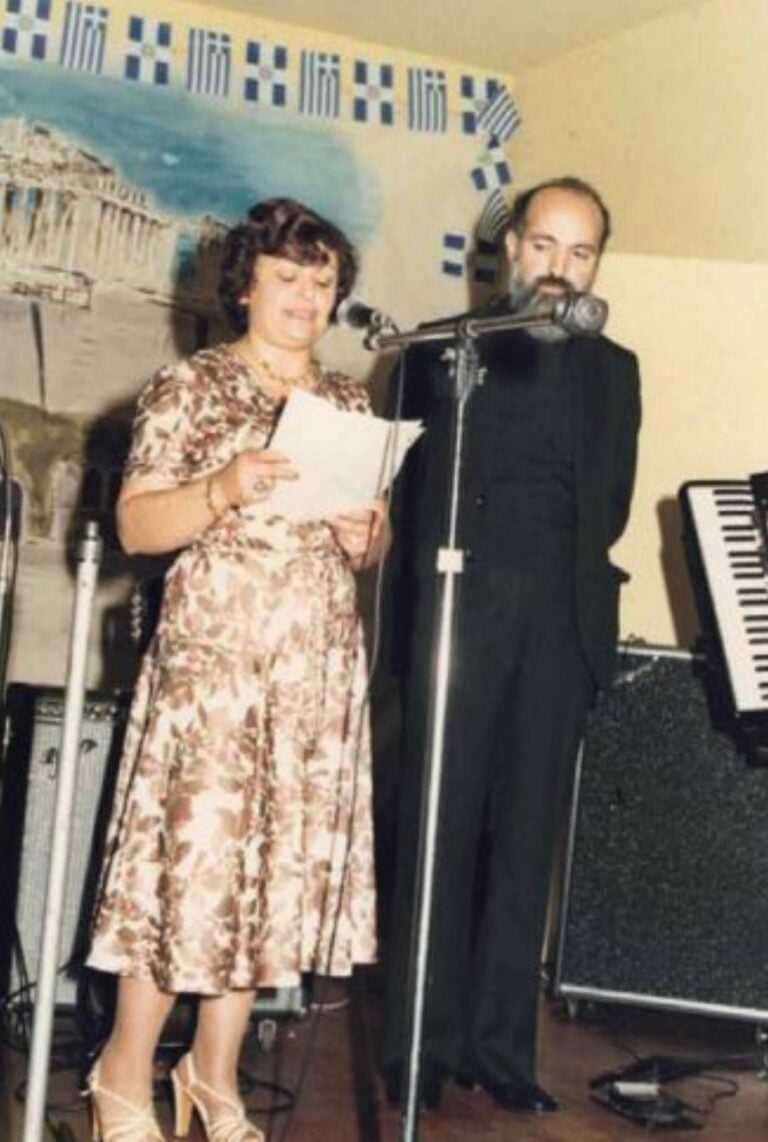
During the late 60’s and for many years after, Spiridoula was doing charity work at Dandenong Greek Church, Women’s Auxiliary. In 1971 she gave birth to our second son, Vrasidas, who was named after my father, and we called him Bill. During this time Spiridoula was very homesick and was asking to move back to Greece.
In mid 1973, we decided to travel back, via New York, to see her family, and then to Greece where we would try and settle. We stayed there for 6 months, and during all that time, Spiridoula was continuously asking to return to Melbourne. She said that comparing life in New York and in Athens, there wasn’t anywhere better to live than Melbourne!
In 1974 we moved back to Melbourne. By this time I was only building houses for sale, and started constructing industrial buildings to sell or lease. Spiridoula went back to the Greek Church, and was soon appointed President of the Women’s Auxiliary, in which she was liked so much by everyone in the church including all the ladies in the Auxiliary ‘Filoptoho’.
Spiridoula was the President of the Women’s Auxiliary for over 40 years. Her charity work and contribution were honoured by Ecumenical Patriarch of Constantinople and acknowledged by the Victorian Government with an Award for Excellence in Multicultural Affairs and a life membership in Dandenong Hospital.
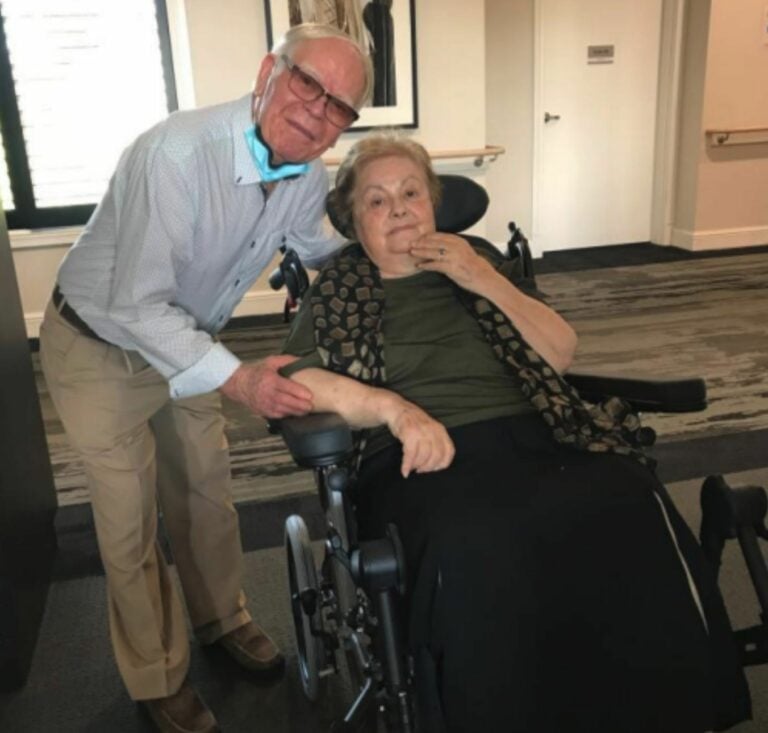
In 2014, Spiridoula was a big part of the project to rebuild the Greek Aged Care facility, Fronditha Care, in Clayton. Unfortunately, a few years later, in 2018, she started to show early signs of memory loss.
For a while Spiridoula stayed at home with the help of private carers, however in mid 2020 she stopped walking, and we were forced to settle her in an aged care home close to where we live. All the family visit her, including our 6 grandchildren, whenever possible, due to the restrictions of the pandemic.
Our two boys, George and Bill, worked together and built a business in property development. They have successfully completed many projects around Toorak and surrounding areas. In their twenties, they created a Greek Band “Kefi”, where George would sing and Bill played the Bouzouki.
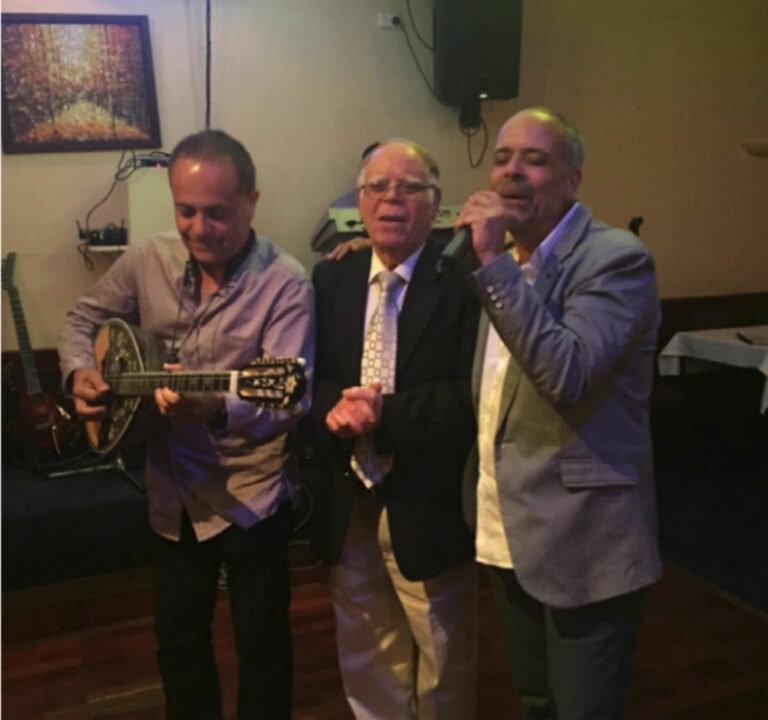
Our daughter, Sia, after completing a degree in Economics, owns and manages a collection agency in the city.
I am 86 years old and Spiridoula is 82, and we are hoping for great grandchildren as Sia’s son is engaged and is getting married this weekend,” Mr Floratos said.
As for his own message on life: “Have courage, move ahead despite the difficulties that may present themselves.”